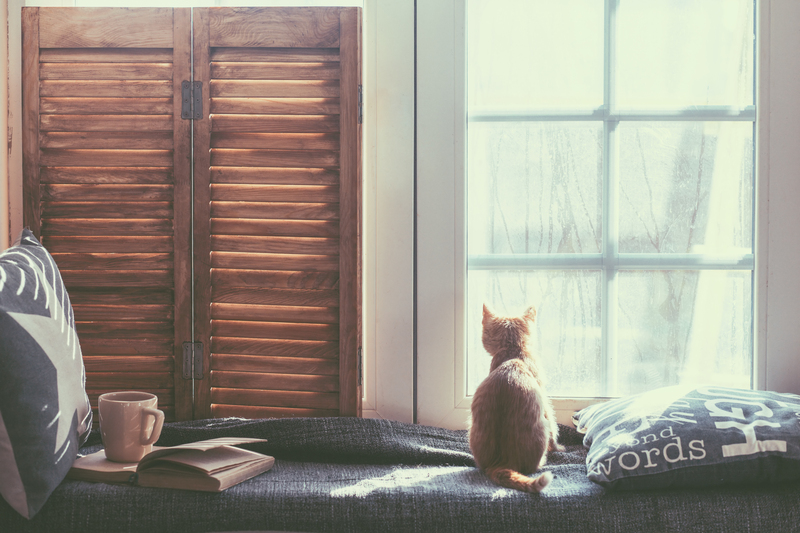Simple Solutions to Keep Your Spaces Clutter-Free After a Declutter
Keeping your spaces organized after a major decluttering session can seem daunting. Yet, with the right strategies, anyone can enjoy a consistently tidy, clutter-free home or office. This comprehensive guide explores actionable, simple solutions to maintain an organized space for the long term, raising both the functionality and visual appeal of your environment.

Understanding the Clutter Comeback: Why Does It Happen?
You've spent hours sorting, donating, and tossing out items. Your countertops shine, closets close without bursting, and you breathe that post-declutter sigh of relief. Yet, weeks or months later, clutter often creeps back in. Why is this a recurring issue?
- Lack of systems: Without organizational systems, items get tossed haphazardly.
- Old habits return: Behaviors that created clutter in the first place creep back in.
- No clear 'home' for items: When belongings lack a designated spot, they pile up.
- Bringing in new items: Shopping or accumulating free items without mindful consideration quickly fills spaces again.
1. Develop Sustainable Organizational Habits
Make Tidying a Daily Ritual
A decluttered home or workspace stays that way only if you incorporate short daily tidying sessions. Set aside 10-15 minutes each day to put things back, wipe surfaces, and address areas where clutter tends to build up.
It's easier to maintain a clutter-free environment with consistent attention than to overhaul a messy room later.
Embrace the "One In, One Out" Rule
This foundational technique keeps excess belongings at bay. For every new item you bring in--whether it's clothing, kitchenware, or electronics--plan to donate, sell, or recycle one similar item you already own.
- Buy a new pair of shoes? Donate an old pair.
- Receive a gift mug? Remove one from your cupboard.
2. Assign a Home for Everything
Permanent homes for your belongings prevent items from "floating" from surface to surface, causing visual and actual clutter.
- Storage baskets for mail, keys, and sunglasses near the entryway
- Labeled bins for cables and chargers in the office
- Drawer organizers in the kitchen for utensils
3. Control What Enters Your Space
Adopt a Mindful Shopping Mindset
Impulse buying and freebie collection rapidly undermine even the most effective decluttering efforts. To keep your home clutter-free after a declutter, pause to ask yourself:
- Do I actually need this item, or is it a want?
- Where will this fit at home?
- Will this add value or just take up space?
Set Up a Quarantine Zone
Dedicate an out-of-the-way basket or bin for new or unsure items. Place receipts, impulse purchases, or new gifts here temporarily. Re-evaluate these items after a week--if you haven't found a use, consider returning or passing them along.
*This solution prevents random items from immediately becoming clutter.*
4. Regularly Review and Reset Clutter Hotspots
Some areas--like mail drop zones, bathroom counters, or kids' play areas--are clutter magnets. Schedule a quick weekly review of these hotspots.
- Flyers & Junk Mail: Shred or recycle immediately.
- Toiletries: Store daily essentials in trays, and stash extras out of sight.
- Toys & Games: Teach children to sort items into bins before bed.
5. Invest in Smart Storage Solutions
Well-thought-out storage is a game-changer for sustaining any decluttering success.
Try incorporating:
- Vertical shelving: Utilize wall space to keep floors clear.
- Under-the-bed storage boxes: Stow off-season clothing or linens.
- Over-the-door organizers: Store shoes or accessories efficiently.
- Multipurpose furniture: Ottomans or benches with built-in storage are perfect for smaller homes.
- Clear containers: Visibility encourages order and quick retrieval.
Don't Forget Labels
Labels not only keep you and your family accountable but also destigmatize putting things away. Clearly marked bins, shelves, and drawers reduce guesswork and help everyone in your household maintain order.
6. Digitize Whenever Possible
Physical paper is a major contributor to home and office clutter. Make a habit of regularly scanning, organizing, and shredding unnecessary paperwork.
Some practical tips:
- Use a phone app to scan receipts and important documents
- Opt for digital statements and bills
- Create cloud folders for easy retrieval
7. Get the Whole Family or Household Involved
Maintaining a clutter-free home is not a solo effort. Every housemate or family member should understand the value of organization systems and be encouraged to participate.
- Create fun declutter "races" for kids at the end of the day
- Assign zones of responsibility in common areas
- Hold short weekly family meetings to reassess organization challenges or successes
8. Schedule Seasonal Mini-Declutters
Even with the most robust systems, households accumulate extra items over time. To keep your house or workspace clutter-free:
- Set reminders to sort through clothes each spring and fall
- Review kitchen items annually for duplicates or unusable items
- Assess seasonal decorations and donate what you no longer love
9. Curate, Don't Accumulate
The most successful clutter-free homes are curated--not devoid of things, but intentionally filled with meaningful and useful belongings.
- Display only your favorite books or collectibles
- Rotate artwork or photos instead of displaying them all at once
- Limit keepsakes to a dedicated memory box
10. Celebrate Small Successes and Keep Improving
Maintenance is a journey, not a destination. Celebrate weekly "clutter victories"--like keeping your kitchen counter clear, or your entryway tidy for more than two days in a row.
Over time, these moments add up, and a truly organized, clutter-free lifestyle becomes your new normal.

Frequently Asked Questions
How can I stay motivated to keep my house clutter-free?
Set realistic goals, reward yourself for progress, and remind yourself of the initial benefits you experienced after your big declutter--like less stress and easier cleaning. Share your progress with friends or family for accountability.
What should I do with items I'm unsure about keeping?
Utilize a "maybe" box or quarantine bin. Revisit these items in a month; if you haven't missed or needed them, let them go.
How do I involve my children in staying clutter-free?
Make tidying up a game, provide easy-to-use bins at their level, and explain the value of sharing toys and clothes they've outgrown.
Can minimalism help keep spaces organized?
Yes! Minimalism prioritizes quality and intentionality. Owning fewer items means easier upkeep and less opportunity for clutter to accumulate.
Conclusion: Embrace Simplicity for a Clutter-Free Future
Keeping your home or workspace clutter-free after a major declutter doesn't have to feel overwhelming. A blend of daily habits, smart storage, periodic reviews, and household cooperation forms the backbone of lasting organization.
Whether you favor minimalist living or simply want your space to look tidy after a decluttering project, these simple solutions to keep your space clutter-free will support a calm, enjoyable, and more productive environment.
Remember: consistency is key. The more these habits become second nature, the easier and more satisfying it is to enjoy a permanently organized space--free from the stress and chaos of recurring clutter.